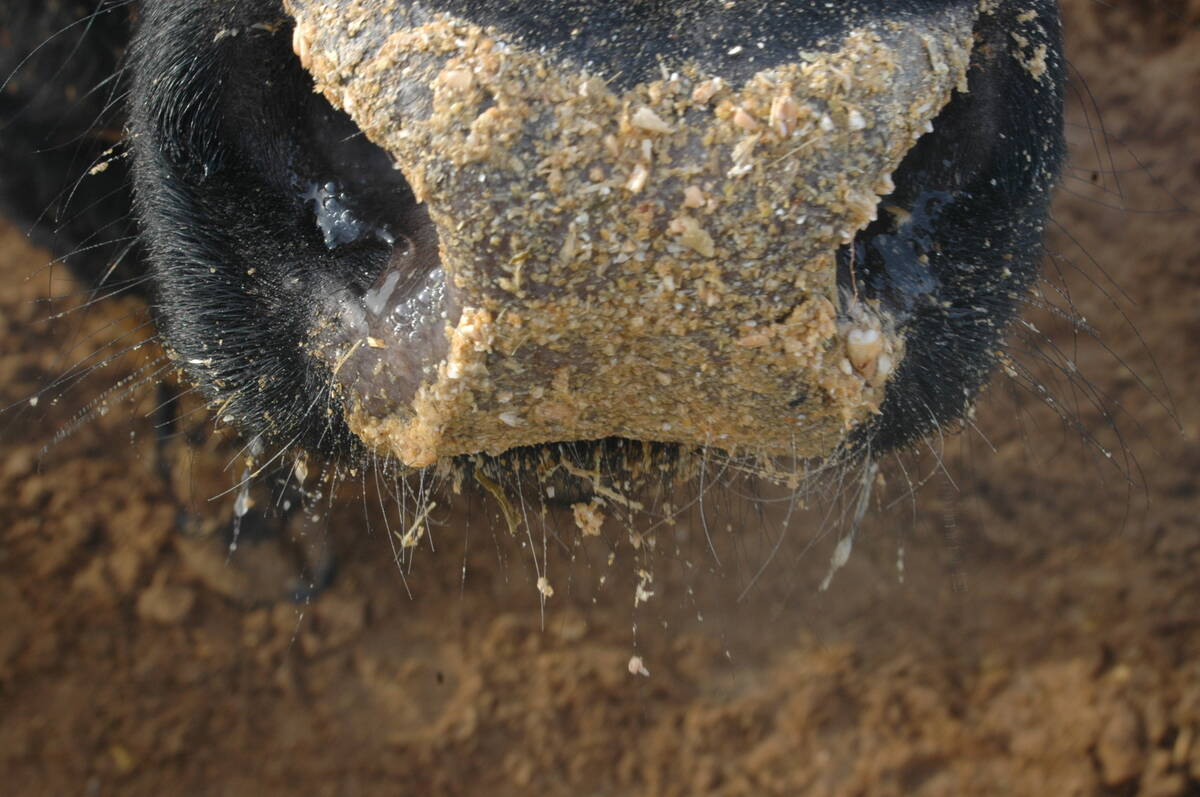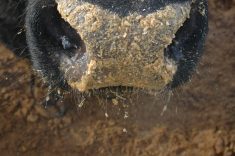Weighing in at just 35 pounds and more than five weeks premature, Itsy-Bitsy is a feisty little thing.
When let out of her own private hutch, she dances around the barn floor, curious to explore.
The Holstein heifer calf was one of the first calves to be born in the new University of Saskatchewan Dairy Research Centre in Saskatoon. She’s also the smallest dairy calf ever born in the university’s century old dairy operation.
Peter Mosterd first assumed that Itsy-Bitsy’s two-year-old mother was having twins at 9:30 a.m., Oct. 9. The animal technician saw small feet and assumed twins because they are usually premature. He said normal procedure is to call in a veternarian for twin births.
Read Also

Feed Grain Weekly: Corn prices steady, barley harvest slows
Lower U.S. corn prices and a slow Canadian barley harvest were affecting Western Canadian feed prices on Sept. 17, 2025.
“My first reaction was surprise because we definitely thought that she would have twins,” he said.
One small pull and Itsy-Bitsy was born. Mosterd said she wasn’t quite developed the way she should have been.
“She looked like a preemie. You could see it on her teeth,” he said.
Mosterd, who has been in the dairy business most of his life said it’s rare to see many preemies.
“You do get abortions more so because usually they come out as a dead calf,” he said.
But she came out wanting to live, he said and started drinking milk soon after birth.
“Once they start drinking and they start getting the suction, then you know they’re fighting to stay alive. But usually I don’t give them a lot of chances. Most of the people here thought we should give it a try,” he said.
Lamal Gabadage was the resident veterinarian at the Western College of Veterinary Medicine who got the call. As a specialist in large animal dairy, he said this was the smallest Holstein calf he has ever delivered or seen. Normal weight at birth is about 45-50 pounds.
“What’s interesting is I didn’t find any big premature signs. Sometimes they have abnormal joints and they can’t walk well just after they are born but I didn’t see any of those kinds of signs,” he said.
Jill Pauls, an animal attendant keeps an eye out for Itsy-Bitsy and helped name her. Itsy-Bitsy has been separated from the other calves and kept indoors. She has been scour free and remains healthy.
Pauls said she’s drinking a little more than one litre of milk three times a day. Because her mouth is so small she’s drinking from a lamb nipple.
“We don’t want to push her because we don’t want to get her sick and scour,” she said.
Most calves are weaned at two months weighing 180-220 pounds, however Pauls expects that won’t be the case here. “She has a ways to go,” said Pauls.
“I don’t think she’s out of the woods yet. She has a long way to go yet. If she keeps eating and starts consuming calf pellets she might get somewhere,” said Mosterd.
Gabadage is not concerned with Itsy-Bitsy’s survival. What now concerns him is the quality of her production life.
“Sometimes premature calves don’t do well in their later life. Honestly I don’t know how to predict that.”















